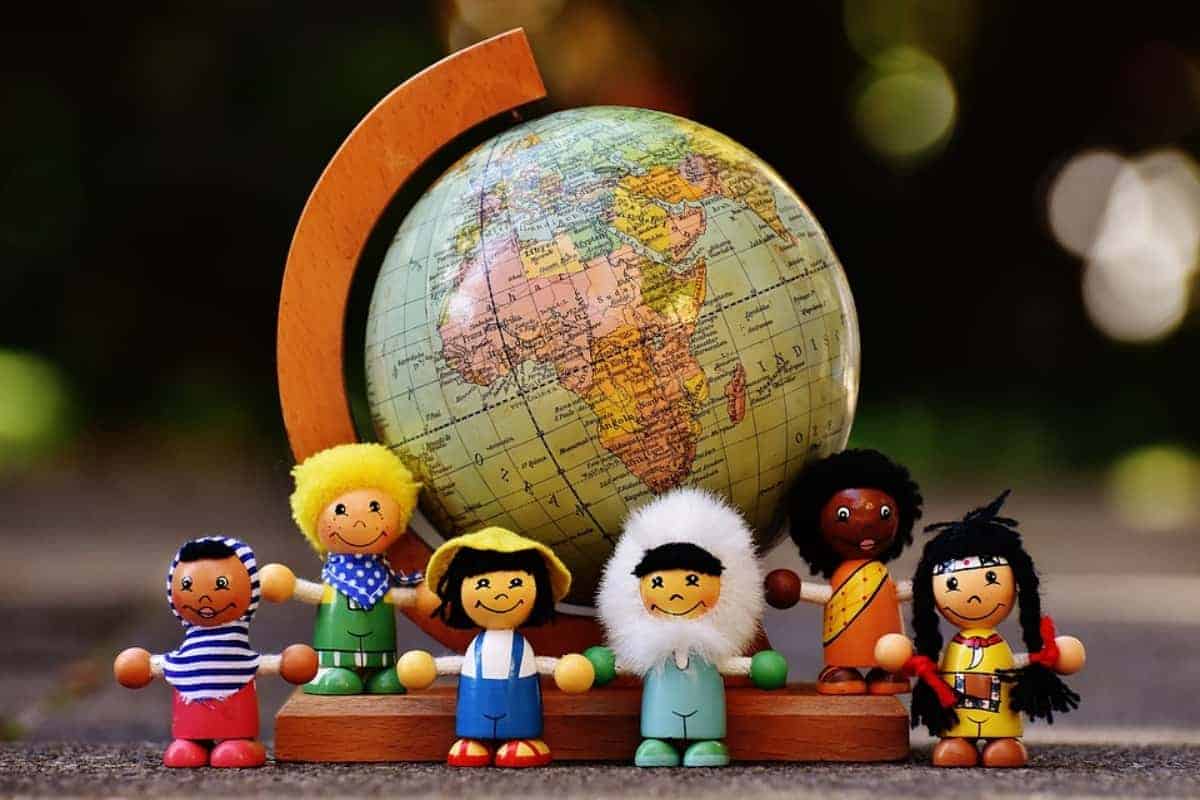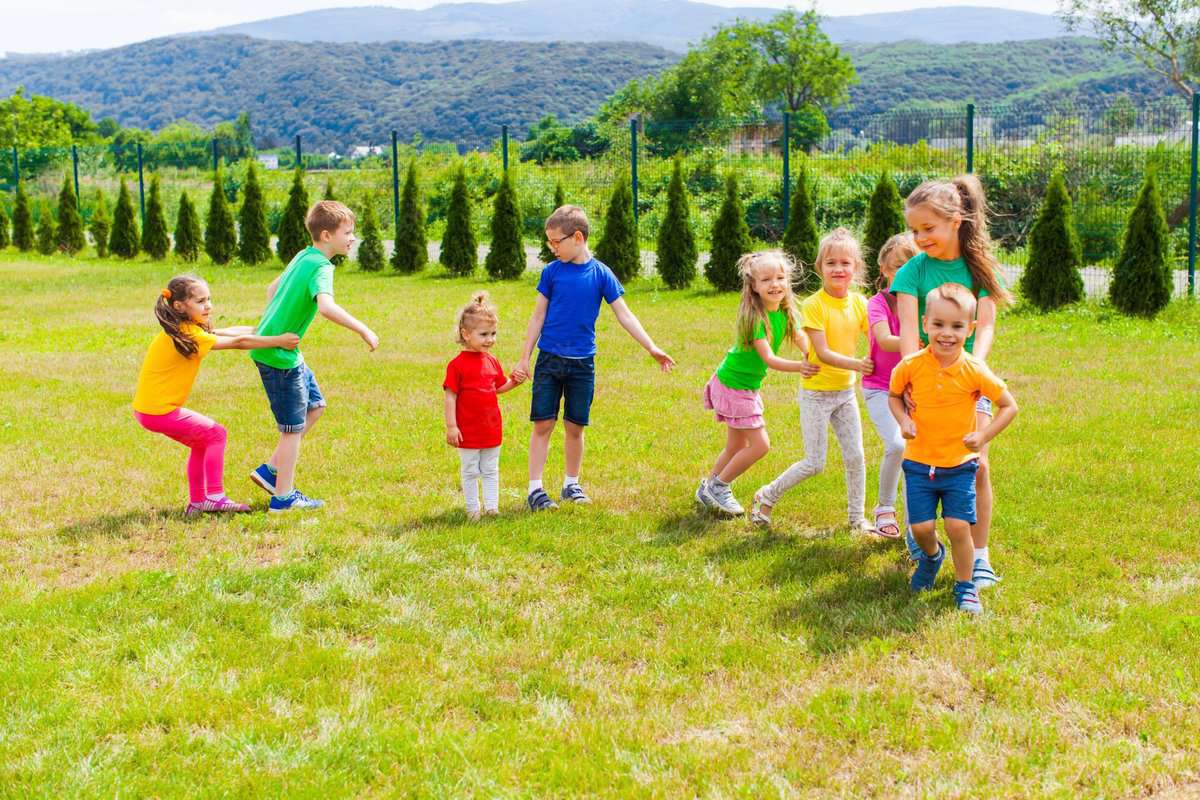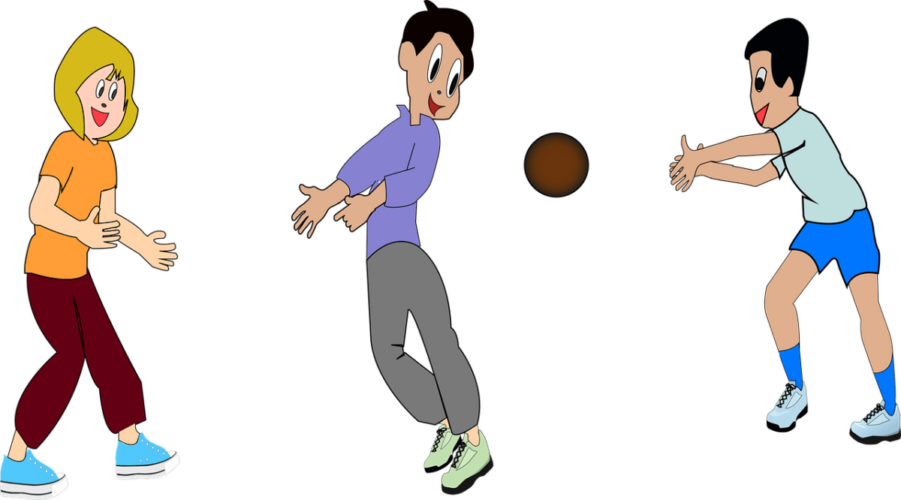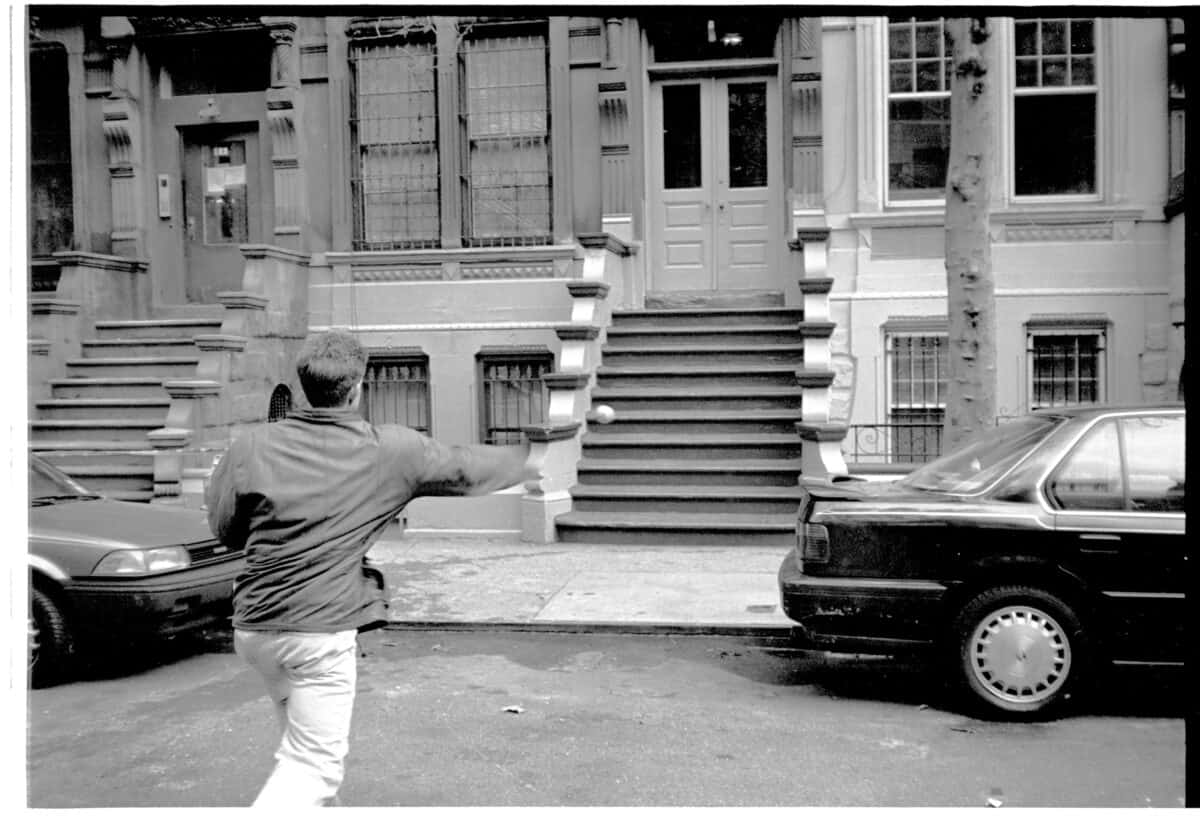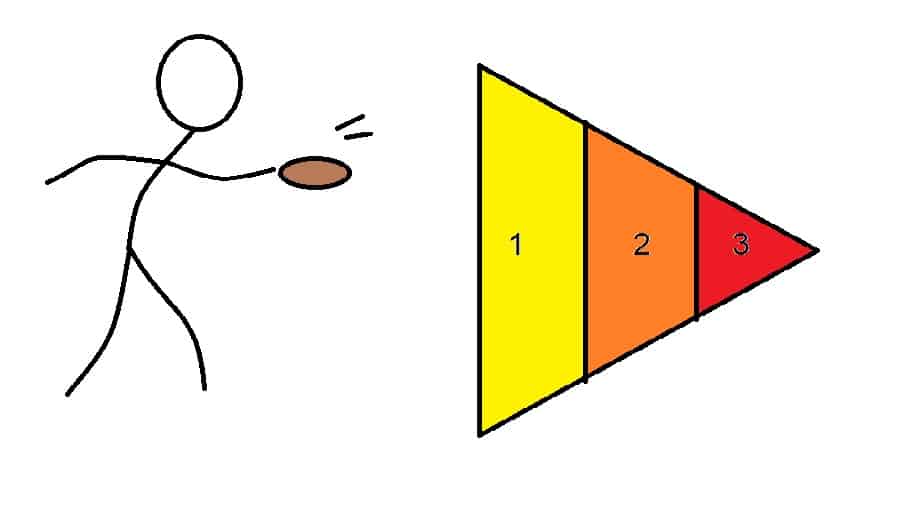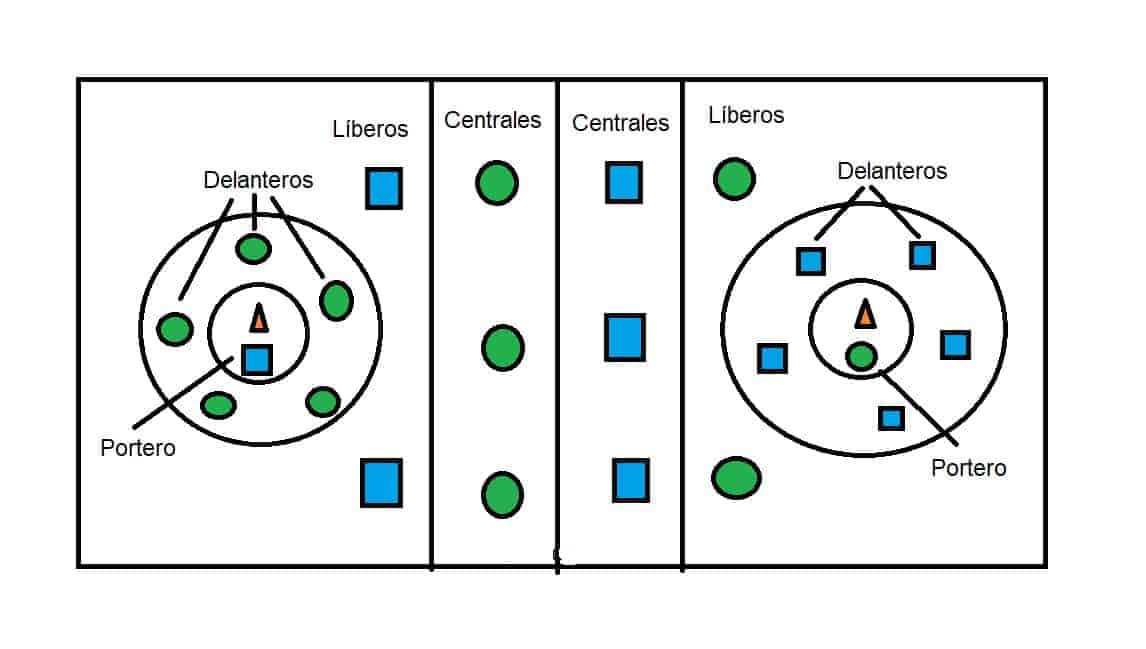This article aims to present different world games in physical education, grouping them in the different continents of the world.
World games in Asia
Below we analyze a variety of world games in physical education, specifically from the Asian continent.
Jumping past the ball
This is a relatively simple game for which we need only two combas and a ball. You need 6 people, who in turn are divided into two trios. In each trio, there are two people who hit the rope and another one who jumps.
Both trios are arranged in parallel and separated about 5 meters from each other, so that the jumpers coordinate with the aim of passing a ball with their hands while jumping. After a while, the roles within each trio are exchanged (1).
Round and round (“Wok Tali Wok”)
Two circles of about 3 meters in diameter are marked out. One is called a standing circle and the other a sitting circle. The players are inside the standing circle and the one who is playing the ball circles around it singing “Wok Tali Wok”.
When the inside players decide, they try to get out and reach the other circle to sit or squat without being touched by the hunter (1).
Those touched become hunters and walk around the sitting circle singing the song. Again, the survivors who have reached the sitting circle try to get out and reach the other circle without being caught.
The game ends when all players are caught. It is recommended to play in groups of 6 to 10 participants to make it more dynamic, and thus not lengthen the duration of the game (6).
Gemo (“Peiai”)
Two teams of 6-8 people each are formed and two goals are established, which can be two trees or, failing that, a space is marked with chalk or cones. These goals must be approximately 50 meters apart.
The objective of each team is to attack the opposing goal and defend their own. Only one player can play the role of goalkeeper (he can be at the limits of the zone), the rest must spread out in the space.
On the other hand, one player of the team will play the role of “Gemo”, who will be designated at the beginning of the game by shouting the word “Gemo”! This person is identified as the bearer of a spirit who will try to reach the opponent’s goal without being caught by any opponent. If he succeeds, he will score a point for his team (5).
To get caught, simply touch the Gemo on any part of his body, no player can be obstructed. If the Gemo is caught before reaching the opponent’s goal, that role will pass to the person who has managed to catch him (6).
World games in Africa
Below we look at a variety of games from the world of physical education, specifically from the African continent.
Bokwele
Two teams of 4-10 people play in a rectangular space divided into two halves. The objective of this game is to defend a hoop inside which there are two handkerchiefs. At the cry of “BOKWELE”, players from both teams try to steal the opposing team’s handkerchiefs without being caught in enemy territory.
If any player is caught there, he will be eliminated from the game (we can introduce a modification to avoid eliminations, for example, that he remains motionless with his legs open and a teammate passes underneath to save him). The winner is the team that manages to have all 4 handkerchiefs in its field.
Foutbol Nient Kamp
This is another game in the world that has similar rules to soccer as we know it, but in this case, groups of 4 players play, where there are 4 goals, each of which is assigned to a player. These goals can be formed with cones and pikes separated at 1 meter of distance.
Note that there are no out-of-bounds, so it is allowed to play behind the goals. If a player scores a goal, the game is restarted by the person who scored the goal. The winner is the player who scores the most goals in a time determined by the teacher.
Variations can be introduced, for example, playing in teams of 2-3 players, or the winner is the player who manages to score a goal in each of the three goals first.
Catch your tail (“Catch your tail”)
In pairs, holding each other by the waist, the partner behind you wears a scarf around his or her waist. When the signal is given, each pair has to try to steal the handkerchief from the other teammates, while at the same time preventing them from stealing their own handkerchief. If during the course of the game, a pair gets separated, they must stop and get back together again (2).
The pair whose handkerchief is stolen will be eliminated ( this rule can be modified by telling the players that if their handkerchief is stolen, they must try to capture another one).
The winner is the pair that keeps their handkerchief within a given time. A variant can be to play by teams distinguishing them by the color of the handkerchief (for example, red against blue).
World games in America
Below we analyze a variety of games from the world of physical education, specifically from the American continent.
Dodgeball (Dodgeball)
Two parallel lines about 8-10 meters apart are drawn in a rectangular space. Two teams play, arranged in single file and facing each other.
To start the game, the first member of the line of a team will take a ball (soft, foam rubber type), while the first player of the other team will advance one step.
The player carrying the ball must try to hit the opponent’s body with the ball. The opponent may dodge the ball, but may not go beyond the line of his field of play, nor may he lift his feet off the ground.
In the event that the ball hits him, the touched player changes teams. On the other hand, if the player who throws the ball misses, he will change teams and move to the end of the line. The team that manages to have more components at the end of the game wins the game.
Hands and bones (“Hands and bones”)
For the practice of these games of the world, two wooden sticks are needed (originally it was played with two animal bones), one of them being painted with a ring or black dot. Two teams play facing each other.
A member of one of the teams carries the two sticks, each one in one hand hiding the black ring or circle, and quickly exchanging the stick from one hand to the other.
Meanwhile, the opposing team must try to guess in which hand the marked stick is in. The team that gets 10 points (3) first wins.
Stoopball
This is another of the games of the world that consists of throwing a small ball that bounces against a ladder and trying to catch it in the air, without bouncing it on the ground. It can be played individually, in pairs or in trios. Players stand 3-5 meters away from the ladder.
More variations are possible, although the scoring method is relatively simple. You get 5 points if you catch the ball after a previous bounce, 10 points if you catch it in the air and 100 points if you were able to catch it in the air after touching the ball on the edge of one of the rungs of the ladder.
This is another typical game of the world in New York, since to access the houses it is common to find stairs (8).
World games in Europe
Next we look at a variety of physical education world games, specifically from the European continent.
Human skittles (“Human skittles”)
Two concentric circles are drawn with chalk, one 4 m. in diameter and the other 1 m. in diameter. Outside the large circle, two players are placed facing each other. On the other side, another player is inside the circle, but without being able to step on the small circle.
His goal is to avoid being hit in the legs by the ball held by the two players outside. He can move around the circle, but at no time can he enter the small circle or leave the large circle.
Thus, the player who manages to hit the center player’s legs will take his place. It is recommended to play with a soft ball and rolling the ball on the floor (4).
Roman Ball
For this game you only need a chalk and a bouncing ball of a size that you can hold in your hand. Two concentric circles are made.
Five participants are distributed freely around the larger circle, while there will be 1 player inside the smaller circle with the ball in his possession. The latter starts the game by bouncing the ball in the inner circle with the intention of getting it out of the outer circle.
It is allowed to run around the circle to catch the ball. If he throws it in such a way that no one catches it, the thrower gets a point. If a player catches the ball on the fly, he exchanges roles with the thrower. The first to reach 7 points wins.
The triangle
This game is usually played outdoors with a small group of people (3-6 participants). A large triangle is drawn on the ground and divided into 3 parts. The smallest part has a value of 3 points, the middle part 2 and the largest part 3 points (7).
Players take turns throwing stones (or yews) from a distance of 3-5 meters at the triangle. As they throw, players add up their scores according to the numbered section in which the stone landed. The first person to reach 50 points is the winner.
World games in Oceania
Below we look at a variety of physical education world games, specifically from oceania.
Ladder jump (Ladder jump)
Participants are divided into teams of 4 to 8 players. This is another of the cooperative games of the world, consisting of reaching the greatest possible distance between the team members by jumping with feet together.
Each team member will start his jump at the point where the heel of his teammate who has previously jumped (9) falls.
Fielding race (Fielding race)
This is a relay game in teams of 3-8 people. A start line is marked and a finish line in front of it.
The objective of the game is to roll a ball across the finish line, run to catch it and give the relay to a teammate. If the ball does not cross the goal line, the player in question has to catch the ball and throw it again until it crosses the goal line (7).
You can start with a short distance and gradually increase the distance.
Tapu-ae
Two teams of 6-12 players are formed. In a rectangular space, several zones are delimited for each role assigned to the participants(3 central players, 2 or more sweepers, 2-5 forwards and 1 goalkeeper).
As can be seen in the image, the objective of this game is to knock down as many times as possible the cone with the ball (the game is played with two balls of different colors) (3).
The game starts in the middle of the field. The mission of the center backs is to pass the ball to the forwards, and the mission of the forwards is to knock down the cone.
In opposition, they will have the opposing team’s center backs and the sweeper players, who will try to intercept the ball and pass it to their team members. To get to the other side, the ball must always pass through one of the central defenders. The positions of the players are rotated from time to time. Other rules to consider are (6):
- You may not invade any area other than the one assigned to your role.
- Running with the ball is not allowed.
- Possession per player is 5 seconds maximum.
- In case of a violation, possession passes to the opposing team.
- You get 1 point if you knock down the cone with the ball of your team’s color and 2 points if you get the ball of the opponent’s color.
- Both balls can be in the same circle at the same time.
- The first team to reach 11 points wins.
To learn more world games, it is recommended to watch the following videos. The first one presents world games specific to the continent of Africa and America, and the second one presents world games from Asia, Europe and Oceania.
Conclusion
This article provides an overview of different games in the world, some of them may be known or simply its original name is different from the one we know today, but the rules remain intact.
Others, on the other hand, are unknown, but simple to apply in the school context, and even, most of these world games can be transferred to the street, serving as a fight against the passive forms of leisure that reign today among children and young people.
In short, world games contribute to the integral development of students in all areas of human behavior, since they favor social interaction, motor work by using basic motor skills (jumping, moving, turning, throwing, catching) as well as cognitive development through decision making.
Bibliographic references
- Orlick, T. (1990). Free to cooperate, free to create (New cooperative games and sports). Barcelona: Paidotribo.
- UNHCR. Spanish Committee (2017). popular games of the world for children. Retrieved on 14/07/2022.
- Barbarash, L. (1997). Muticultural Games. Champaign, I. L: Human Kinetics.
- Obon, X., Torrus, J. and Miracle, L. (1996). All the games of the world. Planeta. Barcelona.
- Bantulà, J. and Mora, J. M. (2005). Multicultural games. 225 traditional games for a global world.
- Méndez, A. (2018). New ludic proposals for the curricular development of physical education. Games with alternative material, pre-sport games and multicultural games. Barcelona: Paidotribo.
- Giráldez, A. And Pelegrín, G. (1996). Other peoples, other cultures. Music and games of the world. M.E.C. Madrid.
- Greene, M. (1999). http://www.streetplay.com/thegames/stoopb01.htm Retrieved 08/13/2022.
- Language Lizard Blog. Multicultural activities: 5 great games played around the world. Retrieved 07/26/2022.
